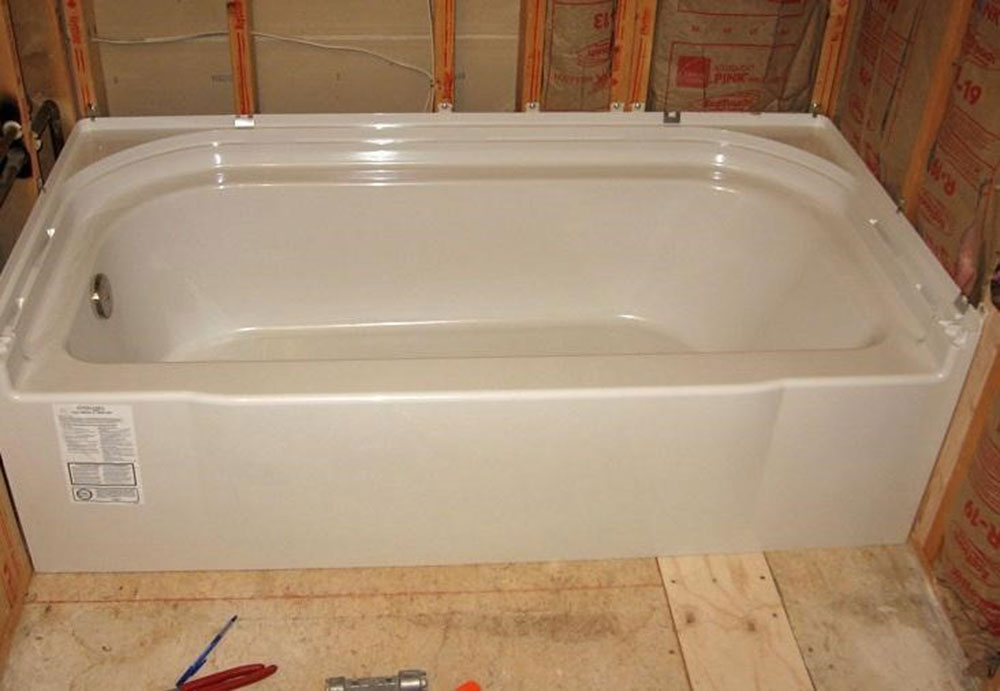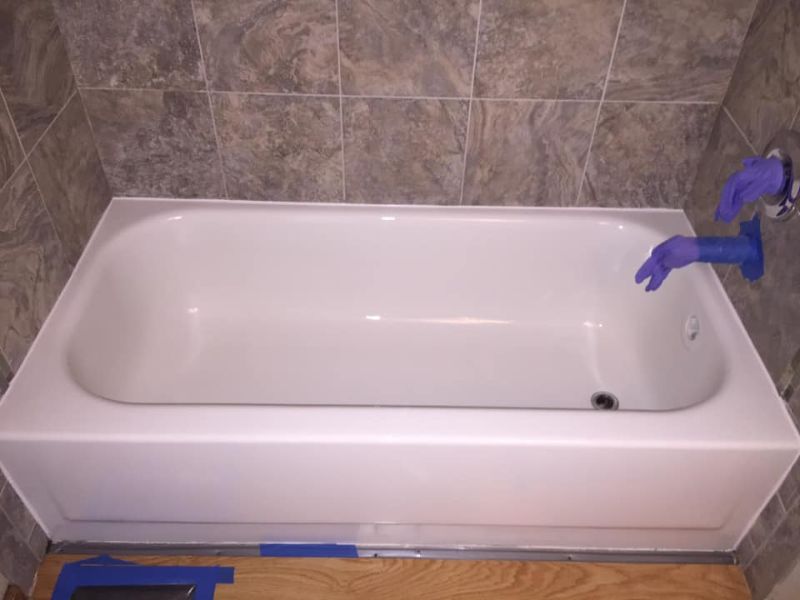Plumbing 101: What You Must Have for Installing a Bathtub
Plumbing 101: What You Must Have for Installing a Bathtub
Blog Article
We've uncovered the article pertaining to How to Install a Bathtub: Install an Acrylic Tub and Tub Surround directly below on the net and felt it made perfect sense to share it with you on my blog.

Setting up a bath tub isn't specifically brain surgery, however it does require strong plumbing, carpentry, and often, tiling skills. Replacing an old tub with a brand-new one is also a moderately tough task. If the old bathtub is readily available, the task can move quickly; if you have to open a wall to remove the old tub and place the new bathtub, the task is much harder. In either situation, the job is within a residence handyman's abilities, although you will certainly need an assistant to move out the old tub as well as set in the new one. Make certain you have actually certified on your own for the work and fit trying it. Instead of employing a specialist to take over a halfway-completed job, it is far better to think about employing one prior to you start. Possibilities are you might need a professional plumber to make tube links.
This write-up will certainly aid you install a new bathtub in your washroom if you have actually already purchased a new tub as well as do not require to change the setup of your previous water system pipelines.
Your tools and also product checklist must comprise the following:
Removing Old Touches
If you require to change old faucets with brand-new ones as a part of your installment, then the first thing you ought to do is disconnect the supply of water. After doing so, switch on the taps to drain pipes any type of water staying in the system. The procedure of getting rid of the existing taps can be rather problematic as a result of the restricted gain access to that is frequently the situation.
Use a container wrench (crowsfoot spanner) or a faucet tool to undo the nut that links the supply pipelines to the faucets. Have a towel all set for the remaining water that will certainly originate from the pipelines. When the supply pipelines have actually been removed, utilize the very same device to loosen the nut that holds the taps onto the bath/basin. You will need to stop the single taps from turning during this procedure. When the faucets have been gotten rid of, the holes in the bath/basin will have to be cleaned of any old securing substance.
Before carrying on to fit the new taps, compare the pipeline connections on the old faucets to the brand-new taps. If the old faucets are longer than the brand-new faucets, after that a shank adapter is needed for the new faucets to fit.
Fitting New Touches
If the tails of the new faucets are plastic, then you will certainly require a plastic port to stop damages to the thread. One end of the connector fits on the plastic tail of the faucet and also the other end supplies a link to the existing supply pipes.
If you need to fit a monobloc, then you will need minimizing couplers, which attaches the 10mm pipeline of the monobloc to the common 15mm supply pipeline.
Next off, position the faucet in the installing opening in the bath/basin ensuring that the washing machines remain in location in between the tap as well as the sink. Protect the tap in place with the maker provided backnut. Once the tap is firmly in place, the supply pipelines can be connected to the tails of the faucets. The taps can either be linked by utilizing corrugated copper piping or with regular tap connectors. The previous kind should be attached to the tap finishes first, tightening up just by hand. The supply pipelines can later be connected to the various other end. Tighten both ends with a spanner after both ends have actually been linked.
Installing the Bath tub
Making use of the two wooden boards under its feet, position the bath tub in the needed setting. The wooden boards are helpful in uniformly spreading the weight of the bath tub over the location of the boards rather than concentrating all the weight onto 4 tiny points.
The next goal is to make certain that the bath tub is leveled all round. This can be attained by examining the spirit level and adjusting the feet on the bathtub until the spirit level reads level.
To set up faucets, fit the bottom of the outermost versatile tap connector to the ideal supply pipe by making a compression join; then do the exact same for the various other faucet.
Activate the water system as well as inspect all joints and brand-new pipework for leakages and also tighten them if essential. Fill the tub and additionally examine the overflow electrical outlet as well as the regular outlet for leakages.
Lastly, repair the bathroom paneling as defined in the maker's user's manual. Tiling as well as sealing around the tub must wait up until the bathtub has actually been used a minimum of once as this will resolve it into its last placement.
Planning for the Installment
First of all, the sustaining structure provided with the bathroom ought to be fitted (if required) according to the maker's instructions. Next off, fit the taps or mixer to the bath tub. When fitting the tap block, it is necessary to see to it that if the tap features a plastic washer, it is fitted in between the bathroom and the faucets. On a plastic bathroom, it is also sensible to fit a supporting plate under the taps device to avoid pressure on the bathtub.
Fit the adaptable tap connectors to the bottom of both taps making use of 2 nuts and olives (in some cases supplied with the bathtub). Fit the plug-hole outlet by smearing mastic filler round the sink electrical outlet opening, and after that pass the electrical outlet through the hole in the bathroom. Use the nut supplied by the maker to fit the plug-hole. Take a look at the plug-hole electrical outlet for an inlet on the side for the overflow pipeline.
Next off, fit completion of the versatile overflow pipe to the overflow electrical outlet. Afterwards, screw the pipe to the overflow face which need to be fitted inside the bathroom. Ensure you make use of all of the provided washing machines.
Connect the trap to the bottom of the waste electrical outlet on the bath tub by winding the string of the waste outlet with silicone mastic or PTFE tape, as well as screw on the trap to the electrical outlet. Link the bottom of the overflow tube in a comparable manner.The bath must currently prepare to be fitted in its last setting.
Tiling Around the Bath tub
In the location where the bath meets the floor tile, it is necessary to seal the accompanies a silicone rubber caulking. This is very important as the fitting can move enough to crack a rigid seal, causing the water to penetrate the wall surface between the bathroom as well as the tiling, bring about difficulties with moisture as well as feasible leaks to the ceiling listed below.
You can pick from a range of coloured sealers to assimilate your components and installations. They are offered in tubes as well as cartridges, and also are capable of securing voids up to a size of 3mm (1/8 inch). If you have a bigger gap to fill, you can fill it with twists of soaked paper or soft rope. Bear in mind to constantly load the bath tub with water before securing, to enable the activity experienced when the tub is in usage. The sealer can crack relatively very early if you do not consider this motion before sealing.
Conversely, ceramic coving or quadrant ceramic tiles can be utilized to border the bath or shower tray. Plastic strips of coving, which are easy to use as well as reduce to dimension, are likewise quickly available on the marketplace. It is suggested to fit the tiles making use of water-resistant or water-proof adhesive and cement.
Bathtub Installation
How Important Is A Bathtub To Your Home?
High-quality baths, showers, and other bathroom updates are necessary when considering a smart investment in your home. It’s a room that you go to every day and one that is constantly being used by guests.The bathroom is one of the top trafficked rooms in a home and also one of the most valuable in terms of home resale.
Install Piping Before Tub
You will be using your existing drain and waste vent system, but pipes required include the hot and cold water supply lines and a pipe leading to a shower head. A mixing valve and shower head are also needed. Air chambers may be required.
Position the Tub
Lower the tub into place so that the continuous flange fits against the wall studs and rests on 1’x4' or 2’x4' supports. Anchor the tub to the enclosure with nails or screws inserted through the flanges into the studs.
NOTE: Remember, bathtubs and shower stalls may require support framing. A bathtub filled with water is extremely heavy, so check building codes and framing support before installing the tub.
Assemble Drain Connections
Assemble the bathtub drain connections by connecting the tub overflow with the tub drain above the trap, not beyond it. The trap will have a compression fitting that screws over the arm of the overflow assembly.
Place a Pipe For the Shower Head
First, locate a brass female threaded winged fitting and attach it to a framing support via a screw or a nail. Then run a pipe up the wall for the shower head. Sweat or solder the other side of the brass fitting to the top of the pipe.
Attaching Hot and Cold Water Lines
Attach your water lines for both hot and cold by sweating these directly into the hot and cold ports of the mixing valve. The mixing valve will be how water enters the tub’s system, not by the pipes themselves.
Install the Spout
Extend a piece of 1/2 inch pipe, or whichever length is specified in the manufacturer’s instructions, for the tub spout. Sweat on a male threaded fitting at the end of the pipe or use a brass nipple of the proper length and a 1/2 inch cap.
NOTE: At this point you should have your rough-in plumbing work inspected before proceeding further.
Check For Leaks
Restore the water pressure and check the drain connection and the supply pipes for any sign of leaking.
estore the Bathroom Wall
Replace the wall with moisture-resistant drywall as a base for your wall covering. Seal the joints between the wall and your new tub with silicone caulk as protection against water seepage.
https://www.berkeys.com/2016/12/02/bathtub-installation-dallas/

I came across that post on Tools You Need to Install a New Bathtub when surfing the search engines. Sharing is good. One never knows, you will be doing someone a favor. Thanks for your time spent reading it.
Secure timely emergency plumbing assistance. Report this page